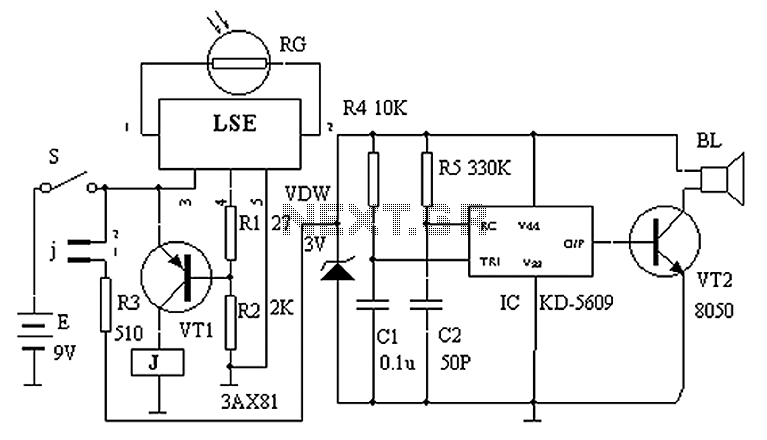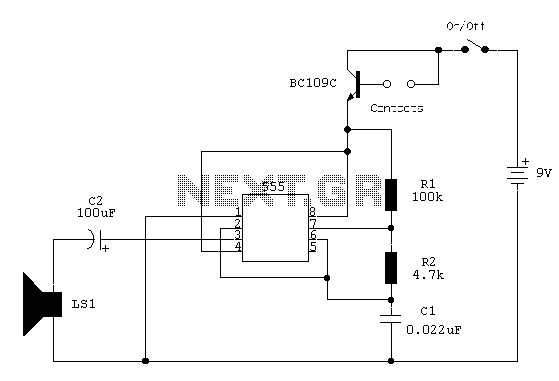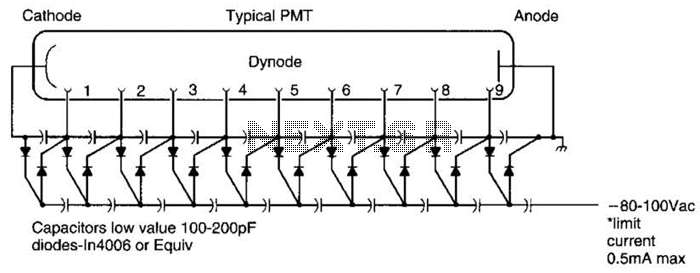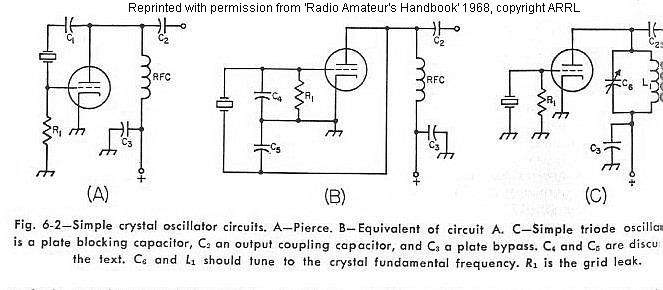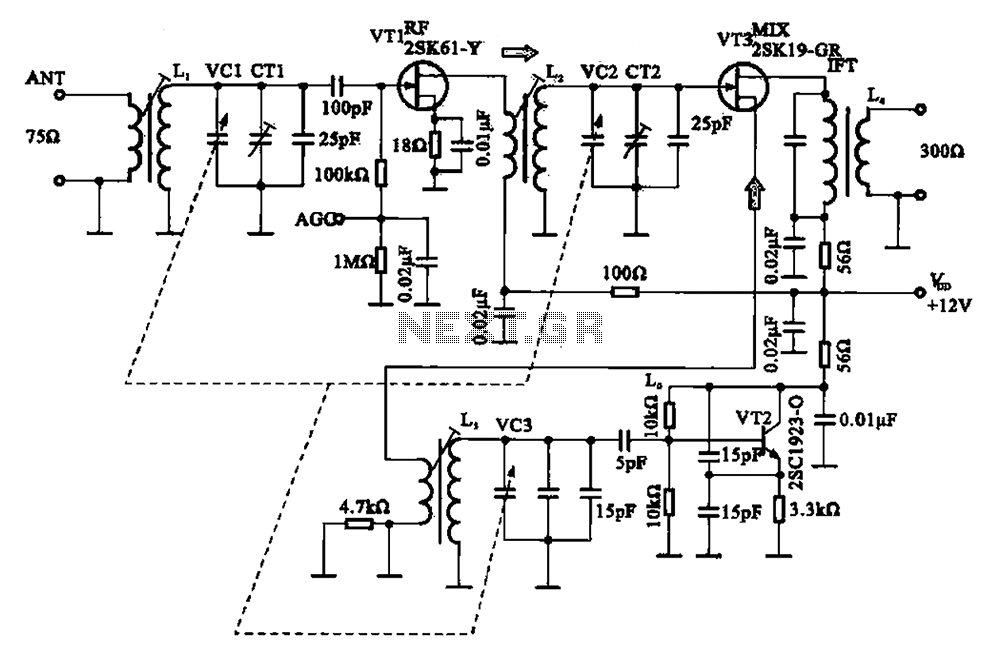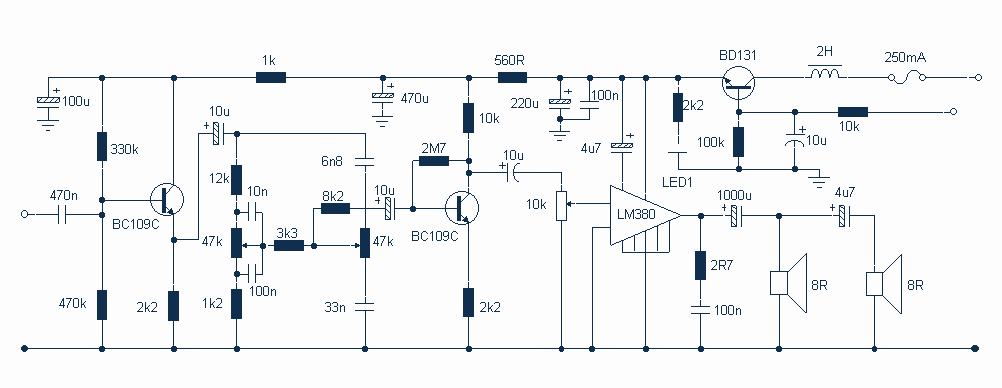
Stepper motor control circuit
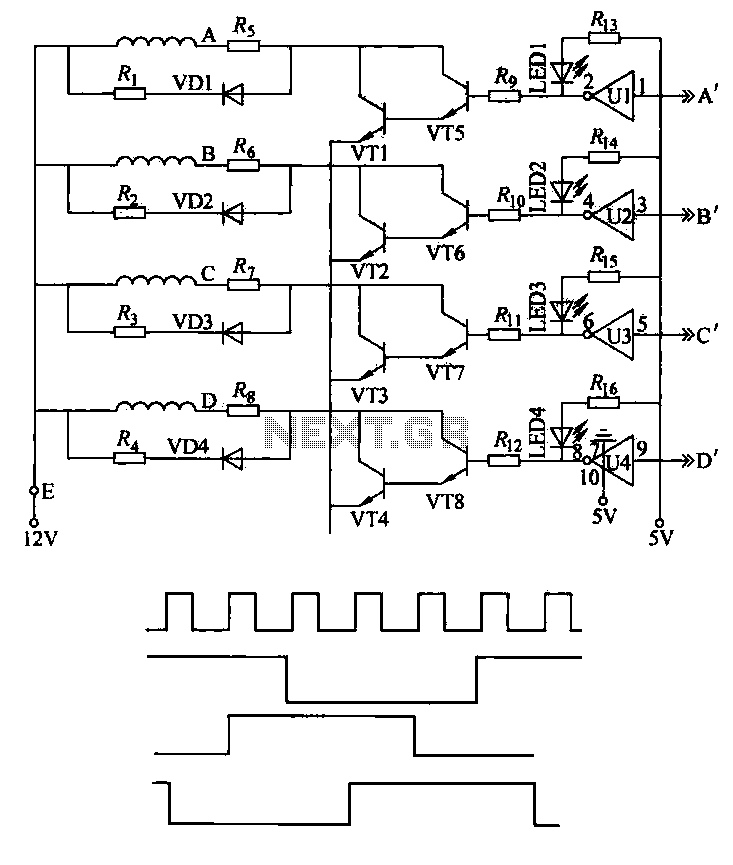
This machine utilizes the FD-CAS-923 1-stepper motor control experiment board with a 4-phase stepper motor to avoid its schematic shown in Figure 4-42a. The JK1 cop 40 core flat cable connector allows for signal arrangements compatible with EICE51 simulation interfaces, which can be directly connected to EICEsl, with a +5V power supply provided by EICE51 and a +12V power plug through an external rKl. According to the working principle of a stepper motor, the 8031 microcontroller connects to the stepper motor driver phases A, B, C, and D. The software-controlled pulse output from port Pl sequences the control of the stepper motor's speed, direction, and step distance. The rotational state of the stepper motor can be observed through the installation status indicators on phases A, B, C, and D. The stepper motor drive circuit includes current-limiting resistors Rs to R8 to control the coil current, and diodes VD1 to VD4 form a feedback loop for the coil current when the transistor switches off, known as a flyback diode. The selection of these components should consider the supply voltage and coil current. Transistors VT1 to VT4 serve as switching elements. The operation of the stepper motor is governed by a pulse signal, traditionally managed by digital logic circuits with a ring pulse distributor to control the stepper motor's steps. The control waveform for this process is illustrated in Figure 4-42b. The running direction of the stepper motor is controlled using a three-phase six-shot mode; pressing A energizes the phases in a specific sequence for forward motion, while a reverse sequence is achieved by a different energization order. Speed control can be observed in Figure 4-42b, where altering the CP pulse cycle time adjusts the duty cycles of the three-phase windings, thus affecting motor speed. The rotation angle corresponding to each input control pulse CP results in a change of state in the motor's windings, determining the stepper motor's rotation angle based on the output pulse count from CP. The system employs an 8031 microcontroller to control the stepper motor operation in a three-phase six-shot mode through output from port Pl, allowing forward or reverse motion. The small changes in the output cycle from port Pl directly influence the motor's speed.
The FD-CAS-923 stepper motor control experiment board is designed to facilitate experimentation with stepper motor operations, enabling users to explore the principles of digital control, speed regulation, and directional movement. The 4-phase stepper motor is characterized by its ability to achieve precise positioning and smooth motion, making it suitable for applications requiring accuracy. The integration with the EICE51 simulation interface allows for real-time monitoring and adjustments during experimentation.
The connection of the JK1 cop 40 core flat cable connector ensures reliable signal transmission between the control board and the stepper motor, minimizing potential interference. The dual power supply arrangement, with +5V from EICE51 and +12V from an external source, provides the necessary voltage levels for both logic and motor operation.
In the stepping motor drive circuit, the inclusion of current-limiting resistors (Rs to R8) is crucial for protecting the motor coils from excessive current, which could lead to overheating or damage. The flyback diodes (VD1 to VD4) are essential for managing back EMF generated during the motor's operation, ensuring that the circuit remains stable and preventing voltage spikes that could affect other components.
The transistors (VT1 to VT4) function as electronic switches, allowing for rapid control of the motor phases based on the pulse signals from the microcontroller. The use of a three-phase six-shot mode enhances the motor's performance by providing smoother transitions between steps, reducing vibrations and increasing efficiency.
Overall, the design and implementation of the FD-CAS-923 stepper motor control experiment board exemplify a comprehensive approach to stepper motor control, integrating hardware and software components to achieve precise and reliable motor operation. This setup serves as an educational tool for understanding the complexities of stepper motor dynamics and control methodologies.This machine uses FD-CAS-923 1 stepper motor control experiment board with 4-phase step motor to avoid its schematic shown in Figure 4-42a, JK1 cop 40 core flat cable connector, the signal arrangement of EICE51 simulation compatible interfaces can be connected directly to EICEsl the artificial mouth. + 5v power supplied by EICE51, + 12V power plug through external rKl. 1) According to the working principle of a stepping motor, using 8031 Pl. 4-7 are respectively connected to the stepping motor driver A, B, C, D phase, software controlled pulse output port Pl sequence, control the stepper motor speed, direction, step distance. At the same time as the stepping motor rotation state can be observed in the A, B, C, D phase output installation status indicator.
2) stepping motor drive circuit Rs ~ R8 current limiting resistor to limit the current value of the coil, diode VD1 ~ VD4 crystal formation reflux coil current loop off the tube, also known as reflux diode, the choice should consider the supply voltage and the coil current. VT1 ~ VT4 as the switching transistor. Control process works as follows. Operation of the stepping motor is controlled by a pulse signal, the traditional method is to use digital logic circuits - ring pulse distributor control stepper motor stepper.
Figure 4-42b process control waveform. (1) running direction control stepper motor with a three-phase six shot mode, if press A - AB + BC-Ib, C + CA-energized II.A order to forward, if by A- AC -C-CB- B - BA - a sub- energize the reverse order. (z) to control the speed of operation from FIG. 4-42b can be seen that, when changing the CP pulse cycle time, ABC three-phase windings of high and low width will change, which leads to power and power variations caused by the rate of changes in the motor speed changes, so adjust the CP pulse cycle can be controlled step into the motor operating speed.
(3) Since the rotation angle of each of the input control pulse CP into a three-phase windings of the stepping motor changes state once, and accordingly a rotation angle degrees, so the angle of rotation of the stepping motor by the output pulse number is determined in the CP. The machine adopts 8031 controlled stepper electric motive operation, according to a three-phase six shot mode in Pl mouth out control code, make forward or reverse.
Because of this small change cycle output port Pl code control operation of the motor speed:
The FD-CAS-923 stepper motor control experiment board is designed to facilitate experimentation with stepper motor operations, enabling users to explore the principles of digital control, speed regulation, and directional movement. The 4-phase stepper motor is characterized by its ability to achieve precise positioning and smooth motion, making it suitable for applications requiring accuracy. The integration with the EICE51 simulation interface allows for real-time monitoring and adjustments during experimentation.
The connection of the JK1 cop 40 core flat cable connector ensures reliable signal transmission between the control board and the stepper motor, minimizing potential interference. The dual power supply arrangement, with +5V from EICE51 and +12V from an external source, provides the necessary voltage levels for both logic and motor operation.
In the stepping motor drive circuit, the inclusion of current-limiting resistors (Rs to R8) is crucial for protecting the motor coils from excessive current, which could lead to overheating or damage. The flyback diodes (VD1 to VD4) are essential for managing back EMF generated during the motor's operation, ensuring that the circuit remains stable and preventing voltage spikes that could affect other components.
The transistors (VT1 to VT4) function as electronic switches, allowing for rapid control of the motor phases based on the pulse signals from the microcontroller. The use of a three-phase six-shot mode enhances the motor's performance by providing smoother transitions between steps, reducing vibrations and increasing efficiency.
Overall, the design and implementation of the FD-CAS-923 stepper motor control experiment board exemplify a comprehensive approach to stepper motor control, integrating hardware and software components to achieve precise and reliable motor operation. This setup serves as an educational tool for understanding the complexities of stepper motor dynamics and control methodologies.This machine uses FD-CAS-923 1 stepper motor control experiment board with 4-phase step motor to avoid its schematic shown in Figure 4-42a, JK1 cop 40 core flat cable connector, the signal arrangement of EICE51 simulation compatible interfaces can be connected directly to EICEsl the artificial mouth. + 5v power supplied by EICE51, + 12V power plug through external rKl. 1) According to the working principle of a stepping motor, using 8031 Pl. 4-7 are respectively connected to the stepping motor driver A, B, C, D phase, software controlled pulse output port Pl sequence, control the stepper motor speed, direction, step distance. At the same time as the stepping motor rotation state can be observed in the A, B, C, D phase output installation status indicator.
2) stepping motor drive circuit Rs ~ R8 current limiting resistor to limit the current value of the coil, diode VD1 ~ VD4 crystal formation reflux coil current loop off the tube, also known as reflux diode, the choice should consider the supply voltage and the coil current. VT1 ~ VT4 as the switching transistor. Control process works as follows. Operation of the stepping motor is controlled by a pulse signal, the traditional method is to use digital logic circuits - ring pulse distributor control stepper motor stepper.
Figure 4-42b process control waveform. (1) running direction control stepper motor with a three-phase six shot mode, if press A - AB + BC-Ib, C + CA-energized II.A order to forward, if by A- AC -C-CB- B - BA - a sub- energize the reverse order. (z) to control the speed of operation from FIG. 4-42b can be seen that, when changing the CP pulse cycle time, ABC three-phase windings of high and low width will change, which leads to power and power variations caused by the rate of changes in the motor speed changes, so adjust the CP pulse cycle can be controlled step into the motor operating speed.
(3) Since the rotation angle of each of the input control pulse CP into a three-phase windings of the stepping motor changes state once, and accordingly a rotation angle degrees, so the angle of rotation of the stepping motor by the output pulse number is determined in the CP. The machine adopts 8031 controlled stepper electric motive operation, according to a three-phase six shot mode in Pl mouth out control code, make forward or reverse.
Because of this small change cycle output port Pl code control operation of the motor speed:
